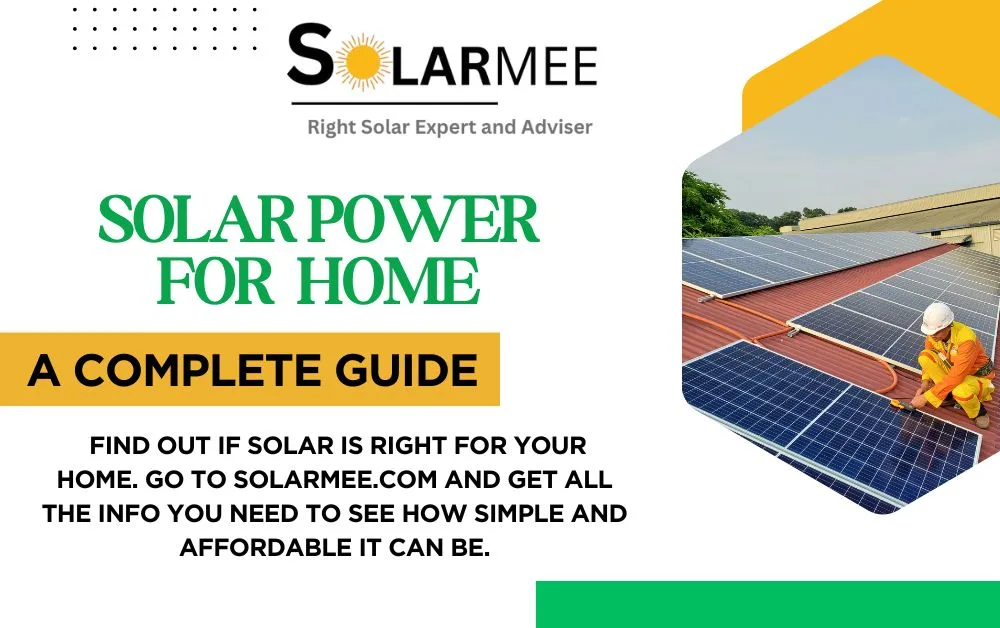The Adelaide solar panel placement has recorded tremendous expansion with increased adoption of clean, renewable energy by households and businesses. Solar energy is also one that has gained momentum in Adelaide owing to the favourable weather patterns and the government subsidies that are provided to entice residents to reduce their electricity bills and also to reduce their carbon footprint.
The rising number of requests to install solar panels in Adelaide shows the willingness to live a sustainable lifestyle and be independent in terms of energy.
The blog is a useful solar panel installation guide that provides an easy-to-understand step-by-step process to ensure that homeowners pursue the process of installing the solar panel with considerable confidence.
Regardless of whether it is a DIY or a professional strategy, this guide has some useful tips, insights, and reviews that would fit the particular environment and regulations of the area of Adelaide.
Why Solar Power is Booming in Adelaide
The booming solar power in Adelaide can be attributed to high government incentives, high cost savings, and the need to be independent of energy sources. The federal and state governments have rebates and programs such as the Small-Scale Renewable Energy Scheme (STCs) that decrease the initial cost of getting solar panels installed, making the transition to solar cheaper.
Also, the solar panels are very effective in Adelaide due to its abundance of sunshine, which is more than 2,700 hours per year, thus providing good returns to homeowners in terms of the investment.
In terms of money, solar panels will assist in minimizing the increase in electricity charges since they produce free electricity during sunlight. In the long term, this can result in large savings; sometimes systems can pay back in 4 to 6 years.
In addition to economic benefits, solar energy provides households with greater power consumption, reducing their reliance on electrical networks and saving them in the face of rising and falling power market prices. Many people will be drawn to solar since it lowers carbon emissions and advances a sustainable future,e, in addition to being environmentally friendly.
Also Read: Step-by-Step Guide for Solar Panel Installation in South Australia
Understanding Solar Panel Installation
Distribution Solar panels installed step by step refer to the process of installing solar panels on a site to absorb solar energy and transform it into electricity. This will include setting up the panels either on the roof or the ground, setting up the wiring, setting up an inverter that will convert the electricity produced by the solar panels to usable power, and connecting it with a battery or an electrical grid. It is aimed at producing clean energy to satisfy electricity demand.
The residential solar panel systems are usually installed on the rooftops of houses, which are used to supply the household’s electric appliances. Business establishments are larger and can be placed on larger roofs or on the grounds with commercial setups to serve and cater to large electricity requirements in business buildings or industries.
The roof status would be the major factor to consider in the installation of solar panels to ensure that it can support the panels without collapsing, the presence of trees or other buildings, which would limit the sunshine and direction of the panels. The panels in the southern hemisphere will face north to make sure that the maximum amount of sunlight is utilized.
| Aspect | Residential Setup | Commercial Setup |
| Location | Mostly the rooftops of houses | Large rooftops or ground-mounted areas |
| Scale | Smaller systems (fewer panels) | Larger capacity to serve businesses |
| Power usage goal | Household electricity needs | High energy demand for operations |
| Installation time | Usually 1-3 days | Can be longer depending on size |
| Cost | Generally lower | Higher, due to scale and complexity |
Step-by-Step Guide for Solar Panel Installation
Step 1: Site Assessment & Energy Audit
The first step is to examine your roof and its state, inclination, and shade under trees or other structures, since this influences the performance of these solar panels. The roofs in Adelaide must preferably face north to have maximum sun exposure. Then, assess your present energy consumption by studying your previous electricity bills to know the amount of power that your household uses. This will assist in determining the size of the system required. An effective solar panel installation will be done by a detailed roof inspection and energy audit, which will appropriately match the needs of your house.
Step 2: Choosing the Right Solar Panel
There are three large varieties of solar panels, and these include monocrystalline, polycrystalline, and thin film. The most efficient is the monocrystalline panel, and they also perform well in the sunny Adelaide climate, but they are costly. The poly-crystalline panels are cheaper, though slightly less effective. The cost-effective and mobile thin-film panels possess low efficiency and are not widely applied to the residential buildings of Adelaide. The optimal option would be efficient, affordable, and durable. Here’s a quick comparison:
| Panel Type | Efficiency | Cost | Suitability for Adelaide |
| Monocrystalline | High (18-22%) | Higher | Best for limited space, high output |
| Polycrystalline | Moderate (15-18%) | Moderate | Good for larger roofs, cost-effective |
| Thin-Film | Low (10-12%) | Lower | Less common, better for large areas |
Step 3: Designing the System & Getting Permits
System design involves determining how many panels to have in the system, the type of inverter (string or micro-inverter), and whether the panel system should have a provision for battery backup to store solar energy. It differs depending on the size of your energy requirement and the roof size. In Adelaide, the majority of the conventional rooftop solar systems do not need to be approved by the council, although before installation, one should inquire with the local authorities and make sure that all the permits and grid connection approvals are ready.
Step 4: Installing Mounts & Panels
The mounting men begin by firmly repairing the mounting brackets on your roof. These mounts make the panels in the right orientation of about 30 to 35 degrees towards the north, where most of the sunlight energy is received in Adelaide. Panels are mounted, then lined and attached to the mounts, making sure that they are stable and firmly attached.
Step 5: Wiring & Inverter Connection
This is followed by the electrical wiring. Designs of a system will attach panels in series or parallel. Electrical leads should be arranged safely to prevent electrical risks. The panel wires are next linked to the inverter, which converts the DC solar energy into usable AC that can be used in your house.
Step 6: Grid Connection & Testing
Lastly, the system is linked to the local power grid with the permission of SA Power Networks. This stage is also linked in case you have battery storage. The system is tested throughout to make sure that it functions properly, such as voltage testing and performance testing. The system will generate clean solar energy upon approval.
Costs of Solar Panel Installation in Adelaide
The installation of the solar panels in Adelaide is determined by their cost, which depends on the size of the system. One of such is that a 3kW system would cost around 3810, a 5kW system would cost around 4570, and a 10kW system would cost around 7770 with government subsidies, including the Small-scale Renewable Energy Scheme (STC).
These costs may increase by 20-30 percent due to higher-quality or premium solar systems. As an example, a 5kW high-end system could be close to 5,930, as panel efficiency is higher and the warranty lifespan is longer.
The prices will differ based on such aspects as:
- Brand: Popular panel and inverter brands tend to be more expensive but have a superior lifespan and performance.
- Roof: The complex or steep roofs may add time and labor expenses to the installation process.
- Installation company: Some installers can provide different quotes depending on the quality of service and experience.
Average Solar Panel Installation Costs in Adelaide
| System Size | Average Cost (After Rebates) |
| 3kW | $3,810 |
| 5kW | $4,570 |
| 10kW | $7,770 |
Maintenance, Insurance & Lifespan of Solar Panels
Solar panels have a lifespan of 25-30 years, although in most instances they can be used even after 35 years as long as they are well-maintained. They must be washed regularly so that they can perform their work efficiently and also survive without dust, dirt, or droppings of birds to block sunlight.
Inspections must also be performed periodically to check for any sign of damaged panels, like cracking and issues with the wiring, and specialists can contribute to the maintenance of the panels and sealing gaps on top of the panels.
Physical damage from weather, inverter wearout, and a gradual decline in energy production are common problems. Monitoring tools or applications can be used to monitor performance from the panel and identify issues in their initial phases. Viable location and shielding panels against the harsh weather conditions also contribute to their durability.
In terms of warranties, solar panels typically have a product warranty (defects) and a performance warranty assuring a minimum output level over 25 years or longer. Personally, the panel efficiency declines naturally with time, although it tends to hit over 80 percent after 25 years.
Solar panels in Adelaide are typically provided under a home insurance cover, although it is wise to ensure that particular coverage is included under the insurer. The damages caused by storms, hail, fire, or theft can be insured.

Choosing the Best Solar Panels & Installers in Adelaide
| Brand | Efficiency | Performance Notes | Customer Reviews & Warranty |
| LG | High (up to ~22%) | Trusted premium brand, reliable for many years | Generally excellent with 2a 5-year product & performance warranty |
| SunPower (Maxeon) | Very High (~22-23%) | Premium panels with cutting-edge tech, high output, and good in limited roof space | Very positive reviews; 25-year warranty; high price |
| Jinko | Moderate (~19-21%) | Great balance of value and quality, good for hot climates | Good reliability, affordable, 25-year warranty |
| Canadian Solar | Moderate (~19-21%) | Durable and affordable, strong performance in Australian conditions | Positive reviews, 25-year product & performance warranty |
| Trina Solar | Moderate (~19-21%) | Handles hot weather well, reliable performance | Positive with good warranty and value |
| Suntech | Moderate (~20%) | Bifacial design, strong and corrosion resistant, good for low-light | Praised for durability, 25-year warranty |
How to select an installer who is certified in Adelaide:
- Find Clean Energy Council (CEC) registered installers since they are in line with Australian standards of safety and industry.
- Review and rating of customers, make sure that previous customers had a good experience.
- Establish warranty and after-sales services.
- You have to select installers who offer a free solar assessment, which suits your needs, and assistance in clarifying the rebates and incentives in Adelaide.
When asking yourself the question of which solar panels are the best in Adelaide, take into account your budget, roof area, and energy requirements. SunPower or LG are the most efficient and come with the best warranty at a higher cost, whereas brands such as Jinko, Canadian Solar, and Trina provide good value to most families.
Also Read: Step-by-Step Guide for Solar Panel Installation in NT (Northern Territory)
Conclusion
Begin by analyzing your roof to determine its suitability; preferably, it must be a north-facing roof with minimal shade, and analyze your domestic energy requirements. The second step is to contact and obtain quotes from licensed and accredited solar installers in Adelaide to select the most suitable one.
The installer will draft the system based on your roof and process the required permits, such as grid connection approvals, and also source all the equipment, such as panels, inverters, and mounts. During the day of installation, the mounting system is fitted on the roof, and the solar panels are fitted and wired. In connection with the inverter. Electrical check and testing procedures are conducted, and the system is finally hooked to the grid. Lastly, inspections and documents are done.
By saving more money on electricity over the years, increasing your home valuation, and sustainability of the environment, such as a reduction in carbon footprint, the installation of solar panels will save you a lot of money. These advantages usually offset the upfront installation expenses in a span of a few years, and solar is therefore a viable long-term investment for Adelaide homes.
It is always prudent to seek professional installer advice before making your final decision because the person is aware of their local regulations and could have the system designed and installed safely, efficiently, and in the best manner to suit your particular needs. This will save you the maximum and prevent expensive installation mistakes.
This guide gives a comprehensive overview of the installation of the solar panel to be installed in the homes of the people of Adelaide to offer them a clear outline on how the switch to clean energy can be provided.achieved

“Hi, I’m Ishita ,a content writer who loves turning ideas into engaging stories. I specialize in writing blogs, articles, and website content that connects with readers. Over the past few years, I’ve worked with startups and companies to create clear, creative, and impactful content. When I’m not writing, you’ll usually find me reading or exploring new ideas for my research. This website is my space to share my work and connect with people who value quality writing.”





